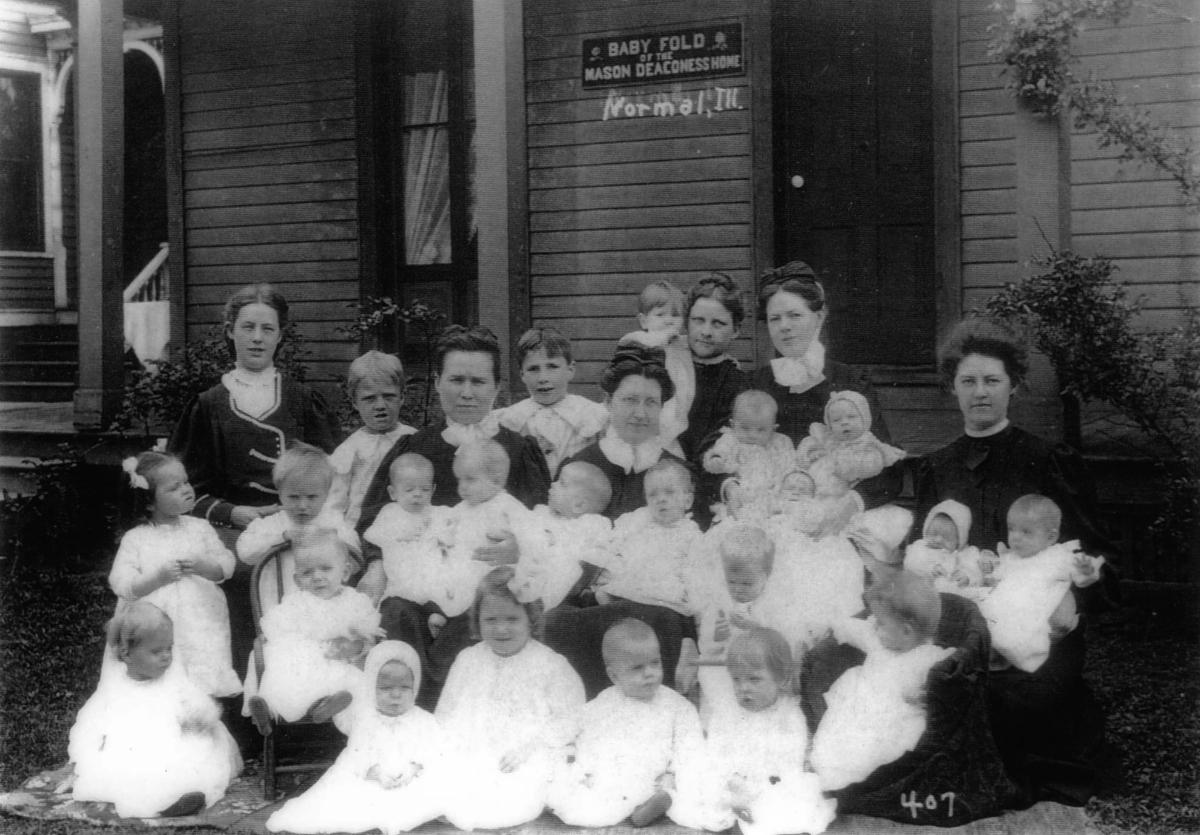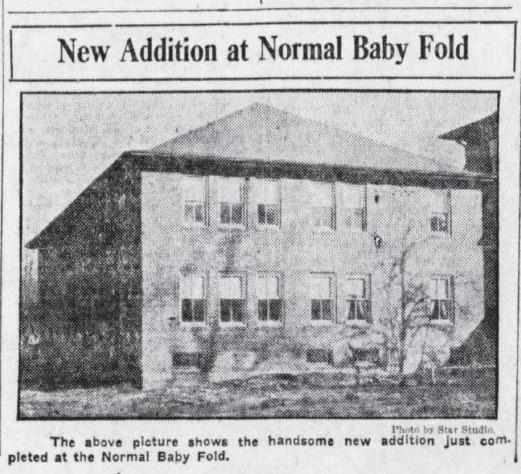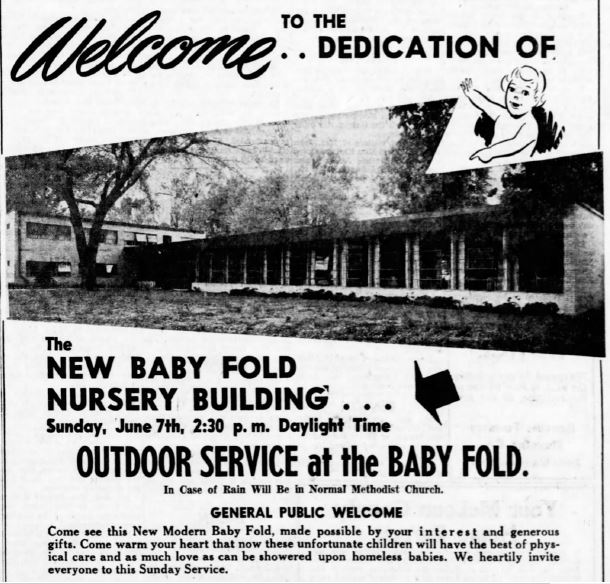The Baby Fold was born out of one woman’s desire to care for others. Through the generous donation of her home in 1902, Nancy Mason could not have imagined all the lives she would eventually touch.
Nancy Mason Opens Her Home
Nancy and Allen Mason were pioneers in Normal– moving here just after the Civil War. Nancy Mason – a faithful and generous woman – gave her home to further the work of the Methodist Episcopal Church. She opened her home to be used by the active and retired Methodist Deaconesses that operated Deaconess Hospital – now Advocate BroMenn Medical Center.
A Growing Need
The local Deaconess women saw a growing need in our community – care for orphaned and abandoned children. Orphan trains dispatched from the east coast brought children to towns all across the US. At each stop the children would get off and stand on the platform while families – typically farm families – selected the children they wanted to take home. This provided homes for many older children who could help on the farm, but not for infants and toddlers. In 1905, the Deaconess Society sent a new graduate of their Training School, Nellie Randle, to Normal to get the Mason home organized as a home for young children.
Tompie Asher Takes the Helm
When Nellie Randle was hospitalized with pneumonia, the Deaconess Society sent another Deaconess, Tompie Asher, as a temporary replacement. She came to Normal in 1908 and her assignment lasted 27 years. She brought the agency through WWI and into the midst of the Great Depression. “Mother” Asher cared for orphans and toddlers with very few resources except for a spirit that would never give up and support of the community and churches. In 1910, the Board of Trustees met and decided to move to 4 lots on East Willow. The home was considered to be virtually in the country and had no running water, no electricity, and no access to paved roads.
The Baby Fold Develops Reputation for Adoptions
Around the turn of the century, The Baby Fold aggressively sought adoptive homes for children, particularly those who were especially vulnerable– children with special needs, minorities, and sibling groups. Adoption laws were almost nonexistent. People would simply come to The Baby Fold nursery, select a child, and take the child home.
The Hammitts Bring Change
In 1939, Reverend William and Gwendolyn Hammitt were named as Superintendent and Assistant Superintendent and they got busy making significant improvements to the agency. The first order of business was to improve the physical living areas. As soon as the building improvements were underway, they focused on hiring trained professionals to staff specific functions such as nursing and social work. Then they began working with Illinois Governor and State Legislature to improve adoption laws.
Over the next several decades, The Baby Fold would undergo significant changes in both services and facilities. In 1966 The Baby Fold began a residential program for children with emotional and behavioral challenges. Providing special education was a natural outgrowth for children living at The Baby Fold. In 1971, Special education services were first offered through the Child Development Center, which later became Hammitt School.
The Baby Fold Enters the 21st Century
Illinois Soldiers’ and Sailors’ Children’s School (ISSCS), a well-known Normal, IL landmark, was founded in 1865 as a home and school for civil war orphans. The Baby Fold purchased and completely renovated the historical building in 1999, renaming it ‘The Family Center’ to house foster care and adoption services, family support services, clinical services and to provide a training center for staff and gymnasium and chapel for the children. In 2002, Hammitt School was expanded to the high school and junior high school levels.
Adapting to Meet Emerging Needs
In order to meet the growing community need for special education, The Baby Fold repurposed the former Soldiers’ and Sailors’ Children’s School, transforming the space back into a school once again. In the fall of 2018, Hammitt Junior/Senior High School students moved into the new space from their rented location on Towanda Avenue.
The Baby Fold serves school children outside of Hammitt Schools through the Community Schools Program. Community Schools grew from Fairview Elementary to include Cedar Ridge in 2017.
Today, The Baby Fold is a multi-faceted agency specializing in the care of children and youth with emotional and behavioral disabilities, or at risk for a variety of reasons. We focus on improving the lives of children and families by building safe, loving, healthy environments through foster care, adoption services, special education, and family and community services. We are in the ministry of transforming lives, and we never give up on a child.
Timeline
April 27, 1899
Nancy A. Mason deeds her home at 309 North Street, Normal to the Methodist Episcopal Deaconess Society.
May 1, 1902
Illinois grants a charter to Mason Deaconess Home for Aged.
May, 1905
Deaconess Nellie Randle becomes The Baby Fold’s first full-time superintendent. “Harry” becomes the first child to be placed at The Baby Fold. Eleven children received care during the first year of operation as a “Baby Fold.”
March 14, 1908
Tompie Witten Asher, deaconess, is elected superintendent.
May 10, 1910
The Mason house on North Street was sold and The Baby Fold purchased a larger house at 108 E. Willow Street, allowing more children to be served.
1918
World War I peak population finds 88 children in residence at one time.
1927
A hospital section is added to the Willow Street facility to meet the medical needs of the children and to treat contagious diseases.
November 15, 1939
The Rev. William A. and Gwendolyn M. Hammitt begin employment as Superintendent and Assistant Superintendent, bringing the staff and programs into the 20th century.
November 14, 1941
Agency’s name officially changed to “The Baby Fold” and a new statement of purpose was formulated: “To provide Christian care and training to dependent and homeless children from birth to six years of age”.
October 17, 1952
A new nursery opens.
May 10, 1957
Services to unmarried mothers approved.
May 15, 1961
Board approves care of infants with intellectual disabilities and cottage program for emotionally disturbed preschoolers.
October 18, 1964
New residential cottage and office building are dedicated.
January 4, 1972
The Child Development Center opens in the former nursery.
July, 1979
The first Baby Fold Summer Camp is held for five days at East Bay Camp, Lake Bloomington.
February 12, 1983
The new Child Development Center is dedicated and the name is changed to Hammitt School in honor of William A. and Gwendolyn Hammitt.
August 1993
Hammitt School opens its first Challenges classroom for children with autism.
November 30 – December 4, 1994
The first Festival of Trees fundraiser is held.
February, 1997
Healthy Start McLean County services added.
January 15, 2000
Child Welfare and Family Support staff move into remodeled office space at 612 Oglesby.
May 4, 2000
Children move into the new Residential Treatment Center at 614 Oglesby.
May 5, 2002
The Baby Fold celebrated its 100th anniversary.
August 26, 2002
Hammitt High School opened successfully with 16 students.
June 1, 2002
Dale S. Strassheim was selected as the new CEO.
2004
Healthy Start adds two components to their program to help with literacy. Reading is Fundamental and First Book.
Hammitt Junior-Senior High Expansion.
2007
Started a new Community Outreach program.
The Baby Fold joins together with four other United Methodist affiliated agencies to create the Illinois Great Rivers Alliance.
2009
A cross-department Clinical SWAT team was formed to assist with highly complex cases.
New monthly tours and new agency brochure.
2010
Director Emeritus Group was created to provide opportunities for former Baby Fold board members to continue service as advocates.
The Baby Fold is awarded the first-ever Non-Profit Agency Excellence Award from the McLean County Chamber of Commerce.
Dr. Lusk provides professional training on Trauma-Informed Treatment in Illinois and throughout the United States.
2011
Trained and Implemented the Attachment, Regulation, and Competency (ARC) model.
August 2011
A federal grant application for installing fiber-optic broadband services was approved, The Baby Fold along with other local agencies, hospitals and schools are co-recipients of the Central Illinois Regional Broadband Network.
July 1, 2014
Dale Strassheim retires and Dianne Schultz named as new CEO.
August 2015
The Baby Fold begins its new Community School initiative with Unit 5 at Fairview Elementary School in Normal.
August 2017
A second Unit 5 Community School location at Cedar Ridge Elementary School is added to meet the needs of more students.
October 2017
The Healthy Start early intervention program expands into Champaign County.
August 2018
The Baby Fold opens a newly located and renovated Hammitt-Junior Senior High School, adding additional classrooms to serve an increasing number of special education students.
2020
The Baby Fold launches their Caregiver Connections Program, part of a free, statewide initiative helping children and providers in family child care, preschools, and home care settings where more attention needs to be given towards a child’s behavior or social-emotional wellbeing.
October 2021
The Baby Fold is inducted as an Angels in Adoption Honoree, receiving a nationally recognized award celebrating the extraordinary efforts of individuals, couples, families, and organizations who work tirelessly to advocate for children in need of a family.
June 7, 2023
Dianne Schultz retires and Clete Winkelmann is named as new CEO.
2023
A dozen programs in operation across Central Illinois all designed to build positive futures for children.
1900
The countless hardships our founders fearlessly overcame in our first decade of devotion illustrate our unwavering commitment to kids and community for 120 years and counting. Our legacy begins in 1899 when Nancy Mason gifted her home to the local Methodist Deaconesses that operated Deaconess Hospital, now Carle BroMenn Medical Center. The Deaconess women saw a growing need in our community - care for orphaned and abandoned children.
Orphan trains carried homeless children westward across the U.S. At each stop, the children lined up on the train platform for families (typically farmers) to select whom they wanted to bring home. This provided homes for older boys who could work on the farm and older girls who could tend to younger siblings. However, infants, toddlers, minorities, and children with disabilities were left to re-board. The unwanted children left on the orphan train found a safe haven in The Baby Fold as our deaconess women welcomed them with loving arms into 'the fold'.
In 1905, the Deaconess Society sent Nellie Randle to Normal to get the Mason home organized as a home for young children. Randle brought with her Baby Harry, considered the very first child placed in our care, and a mere ten dollars, five of which were won in an Ivory Soap jingle contest.
Soon after her arrival, Nellie was hospitalized with pneumonia, and the Deaconess Society sent Tompie Asher as a temporary replacement. Asher came to Normal in 1908 and her “temporary” assignment lasted 27 years. In 1910, The Baby Fold moved to four lots at 108 E. Willow Street, the former home of Myrtle Norton Walgreen, wife of Walgreens founder Charles Walgreen. Normal merchants helped push babies in buggies and carts to the new location, where Hammitt Elementary School is today.
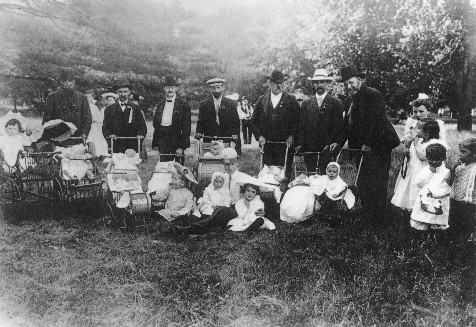
Townspeople helped push baby buggies to The Baby Fold's new location
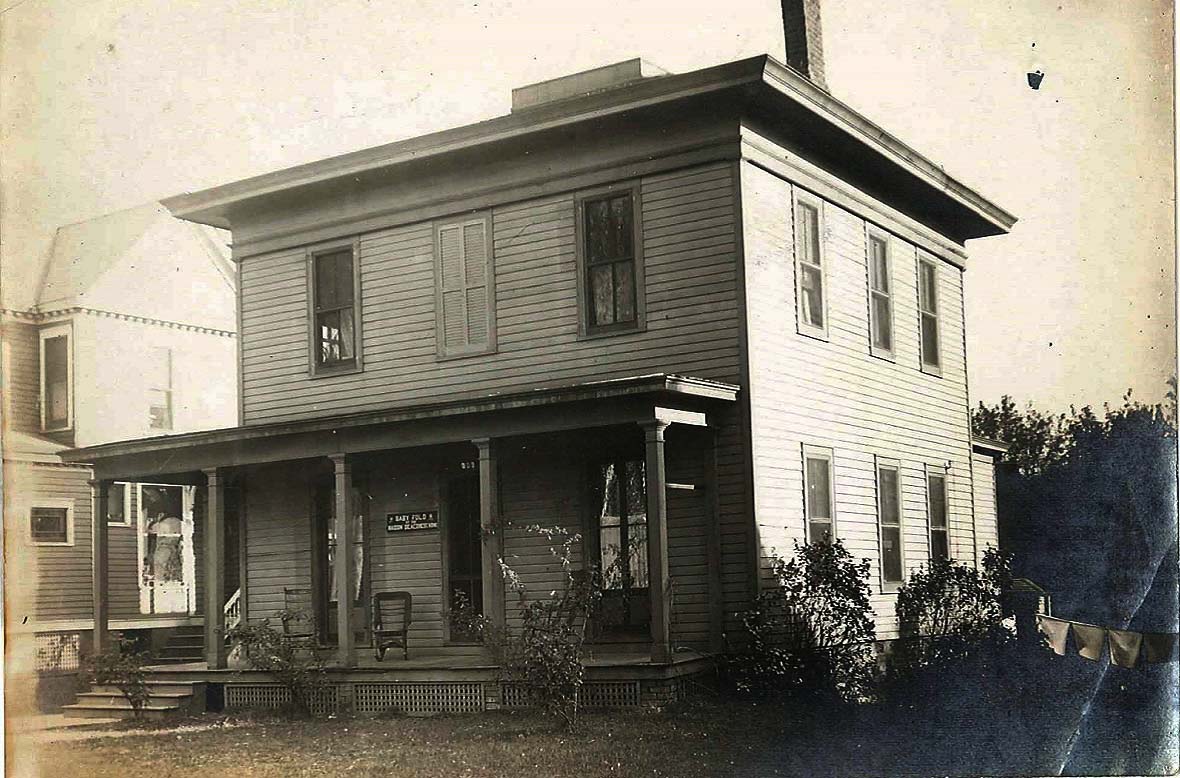
Nancy Mason's gifted estate was the first home of The Baby Fold.
Outside 108 E. Willow St, where care continues today.
1910
The number of babies at the new home continued to increase and in October of 1911, an adjoining lot was purchased. The expansion was only made possible by the orphanage’s “Good Angel,” Dr. William Quine, who made regularly recurring gifts so more children could heal and grow. Dr. Quine made a gift annuity, commonly referred to as a Charitable Gift Annuity today, to help the agency better plan for the future.
That same year, The Baby Fold was the recipient of funds raised from Trolley Days, a Twin Cities tradition dating back to 1899. The Pantagraph encouraged readers to “Leave the auto uncranked and keep the horse in the barn, for the streetcar needs you.” The deaconess women, who operated the agency at that time, took shifts as guest conductors on trolleys decorated with baby photos. The deaconesses handed out photos of babies and young children in the home and collected donations from passengers to support the ever-growing need.
In 1917, the Board agreed to raise $8,000 to purchase 20 acres of farmland on North Main Street to have plentiful eggs and milk to feed the children. The farmland also provided much of the feed needed for the agency’s seven cows. The self-sustaining farmland was a wise investment as the First World War left 88 children residing at The Baby Fold at one time.
Our agency has also weathered multiple pandemics. In the 1910s, our on-staff physicians were treating Diphtheria and the Spanish Flu. To this day, we still employ a comprehensive medical team including physicians, nurses, psychologists, therapists, and more.

The Baby Fold has always had physicians on staff. In the 1910s medical staff treated Diphtheria and the Spanish Flu.
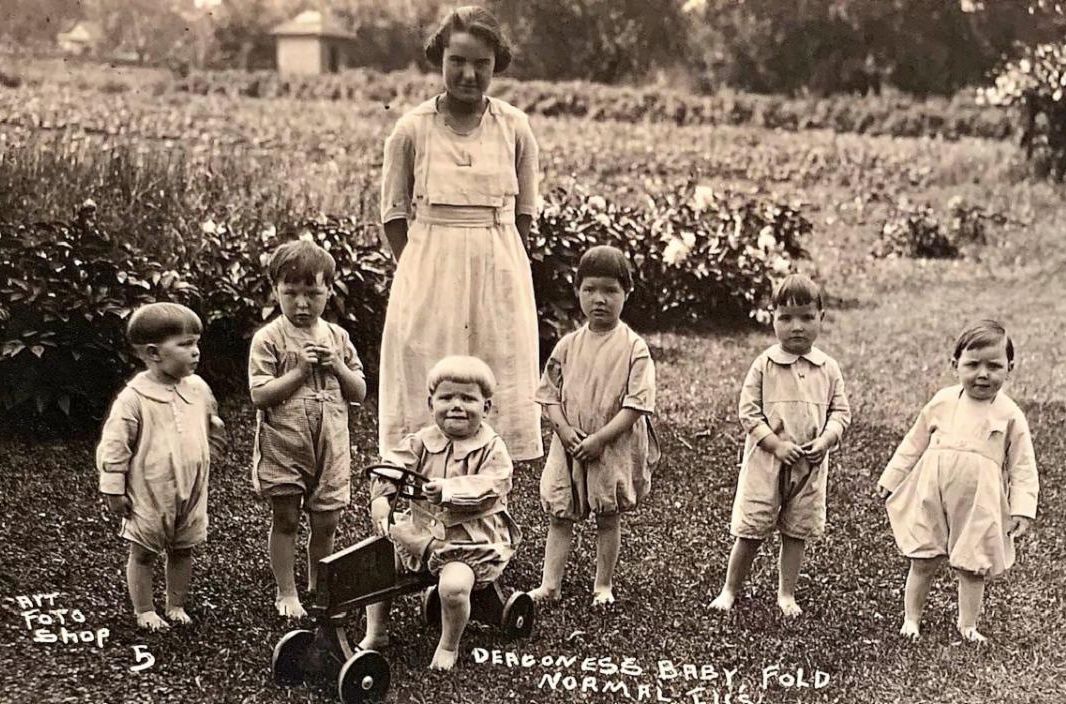
The Baby Fold raised chickens and cows on their farmland to provide plentiful milk and eggs for the young children.

Pictured in this 1913 postcard, Miss Clark, Miss Harris, and Miss Hutchison are said to have been guest conductors on Trolley Days.
1920
Throughout our history, our amazing community has supported The Baby Fold’s vital work. 'The Baby Fold Club' celebrated its first anniversary in 1920, hosting a jelly and jam shower. The club was comprised of 22 members, each paying $10 per year to support the agency's life-changing work. The club had no regular meetings, only gathering when dues were paid and special offerings were made to bless the children of The Baby Fold.
In September of 1920, an article in The Pantagraph highlighted how the value of the agency, located at 108 E. Willow Street, where Hammitt Elementary School is today, increased from $2,500 when purchased in 1910 to $40,000. At that time, the agency’s average monthly expenses were $700. Ten nurses were employed, each having a family unit of 5-6 little ones in their care. Every 4 hours the babies were fed, each bottle labeled with a linen ribbon with the child's name. In 1921, the agency hosted an ice cream social on the lawn to raise funding needed to care for the little ones. The Pantagraph urged readers to come out and 'Help the babies'.
From 1920 to 1926, the number of children and babies residing at The Baby Fold increased from 54 to 73, and the value of the home increased by $10,000. Over 6,000 items were laundered every week by 4 staff members, while 3 cooks prepared all meals, and 1 janitor milked 7 cows, cared for the chickens, and tended the garden to provide fresh milk, eggs, and vegetables for the little ones.
In 1926, an anonymous donor honored his late wife with a memorial gift to The Baby Fold, making it possible to add a four-bedroom hospital wing to care for sick children and babies in the home. The hospital addition was completed in 1927. Before the hospital, physicians performed tonsillectomies on children and staff alike at the dining room table. In addition to the hospital, further improvements were made in the 1920s including a Sunday school room, playrooms, and sun parlor. Each expansion allowed more little children to find a loving home and safe haven at The Baby Fold.
New Years Day of 1927, The Pantagraph showcased one of The Baby Fold's many building expansions
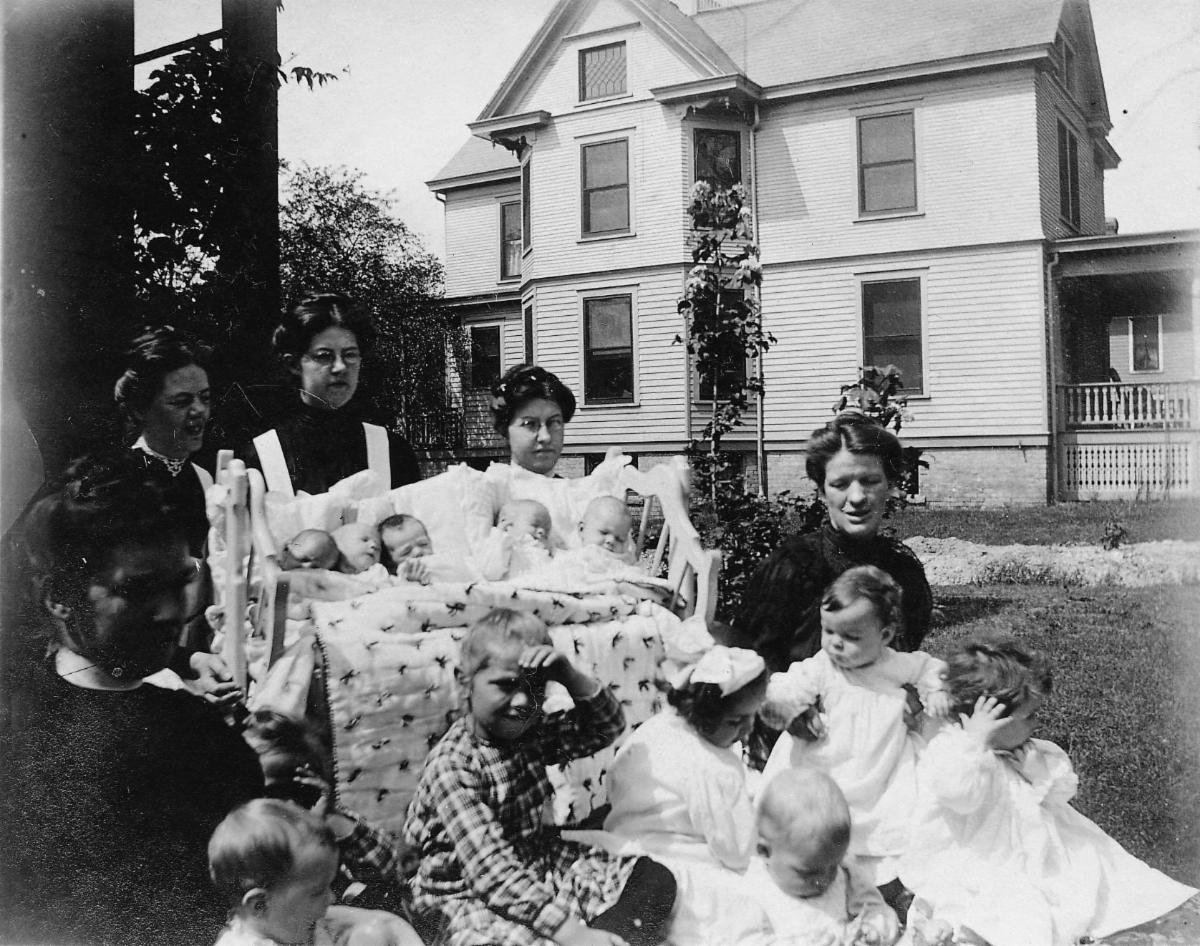
Deaconesses, children, and babies all enjoyed the fresh air on The Baby Fold's lawn in this historic photograph
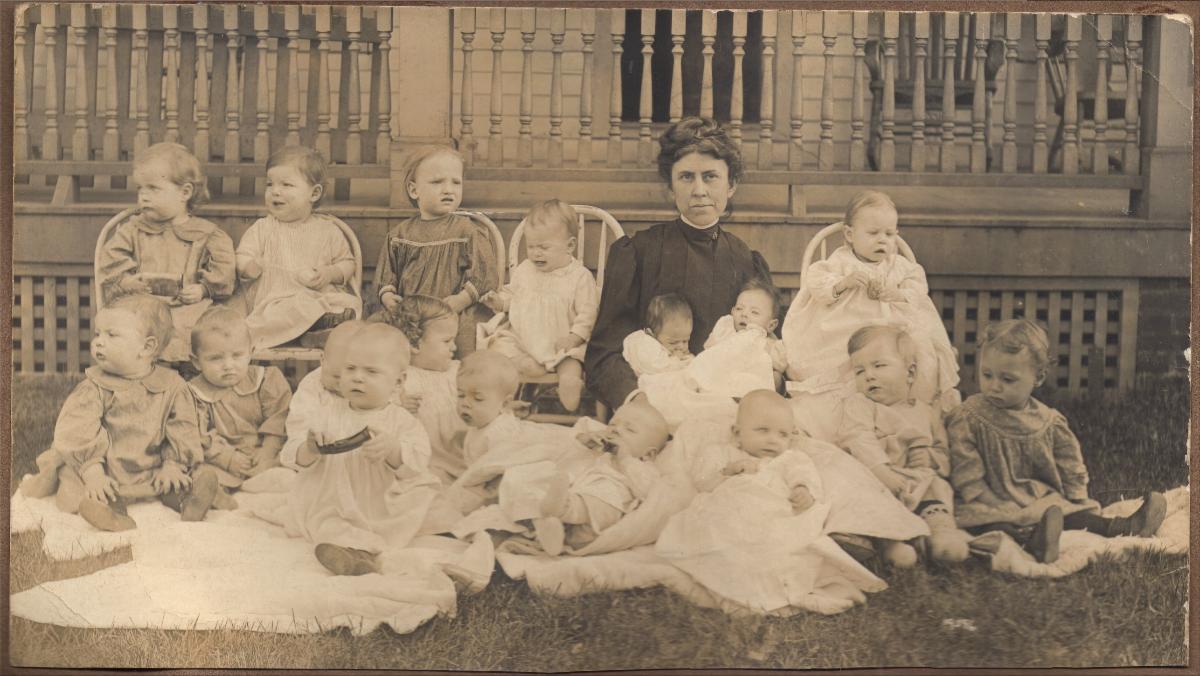 Tompie Asher, Baby Fold Superintendent from 1908 - 1935, was the first woman nominated for The Pantagraph's Community Service Award because of her selfless devotion to children
Tompie Asher, Baby Fold Superintendent from 1908 - 1935, was the first woman nominated for The Pantagraph's Community Service Award because of her selfless devotion to children
1930
The decade began with a big step forward in financial stability. The Baby Fold’s endowment fund began in 1930, after receiving $9,000 from the Fear estate in Gridley, IL. The Board of Trustees meeting minutes state that the donation was invested in Dry Grove Township “gravel bonds”, drawing 5 percent interest. As the community witnessed the life-changing work of the agency, The Baby Fold continued to be the recipient of estate gifts across Central Illinois.
With Superintendent Tompie Asher faithfully stewarding each gift, the agency persevered through The Great Depression. Asher found creative ways to care for the 75-80 children residing in the home, using funds that were set aside for home maintenance to purchase food instead. Additionally, the 27 staff members frequently donated back a portion of their earnings to provide for the little ones. Regardless of the hardships, The Baby Fold did not alter from its cash-only policy and did not fall into debt. Physicians, among other service providers, donated their services to the children in need.
Asher, with a basket in hand and sometimes a little child a few steps behind, would walk up and down the streets of Normal visiting merchants in hopes of day-old bread, perishables, or anything else our loving community would donate. Asher’s solicitation didn’t end with Normal city limits. She tirelessly traveled to churches, conferences, and groups across Central Illinois to speak about The Baby Fold’s ministry and collect donations. In 1932, Carlock Vacation Bible School visited the little children in the home and donated funding to purchase a teeter-totter and outdoor swing for the lawn. Barrels filled with empty jars were sent to churches, who would faithfully fill them with canned fruits and vegetables. One of the children’s favorite donations was cookies. “Cookie hour” was 3:00 pm every afternoon. Two women in Kempton, IL, had sent cookies once a month for years. By 1927 they had donated a staggering 384 dozen cookies!
In 1935, after 27 years of selfless devotion to orphaned children, Tompie Asher retired from The Baby Fold. Even after retirement, she still worked closely with the agency by serving on the Board of Trustees and managing The Baby Fold’s farm, where she resided. At the June 8, 1935 Board meeting, Annie May Raddin of Holyoke, Massachusetts, was named as Asher’s successor. However, circumstances prevented Raddin from coming to the agency. Another candidate declined the position before Ethel Glandon of Kearney, Nebraska, accepted the role. She had been a deaconess for 27 years and superintendent of a junior college in North Carolina for 3 years. By October of 1936 the superintendent position was again vacant and E.L. Beach, The Baby Fold’s former secretary, was appointed as temporary administrator. On November 5, 1937, Irma Newcomer, former pastor’s assistant at First Methodist Episcopal Church of Champaign, was hired as the new superintendent and Beach continued as assistant superintendent. When Newcomer and her assistant resigned a mere 2 years later in November of 1939, the future of The Baby Fold was questionable. The Board of Trustees wondered if they could ever find the right person to lead the agency. (Spoiler alert – they did!)
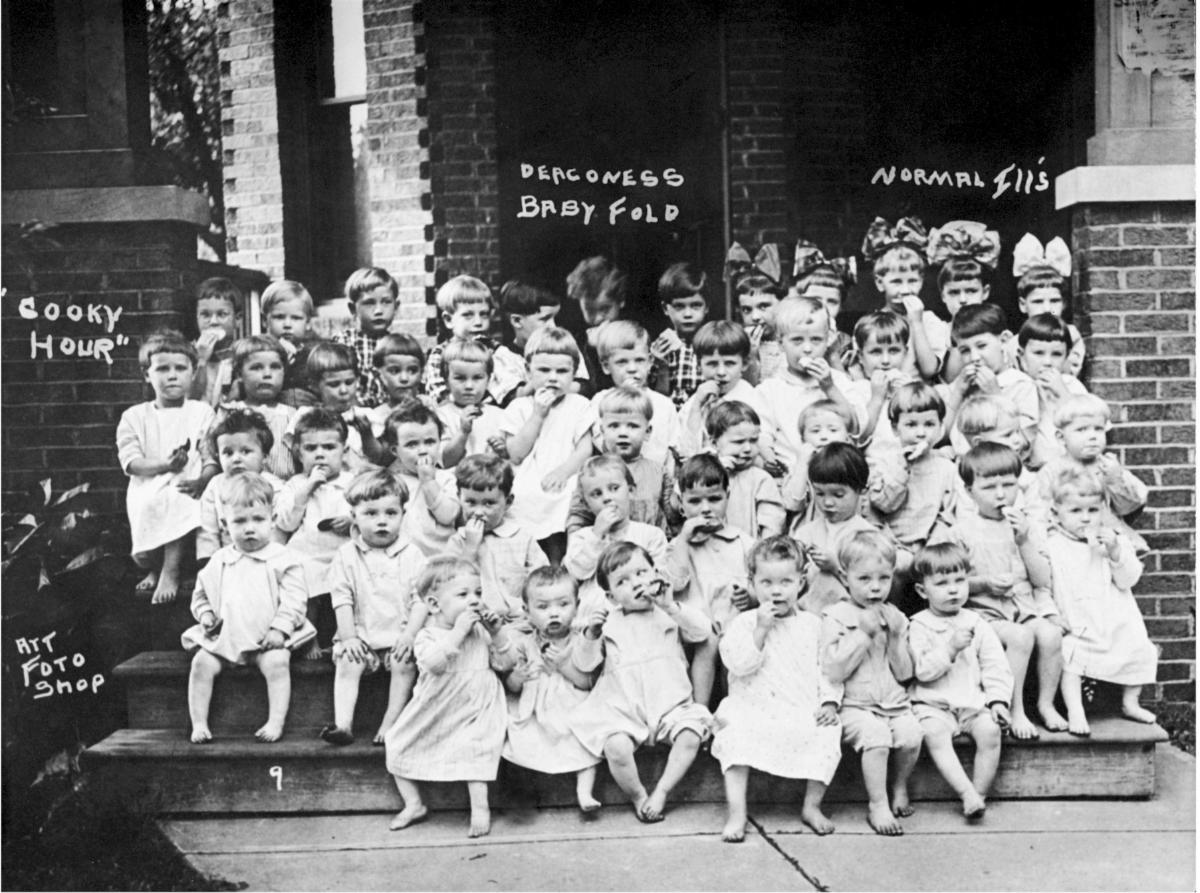
"Cookie Hour" was 3:00 pm every afternoon at The Baby Fold. Dozens of cookies were donated for the little children to enjoy, in addition to canned fruits and vegetables.

This 1937 Pantagraph photoshoot shows Jackie, a Baby Fold child, thoroughly enjoying some jam!
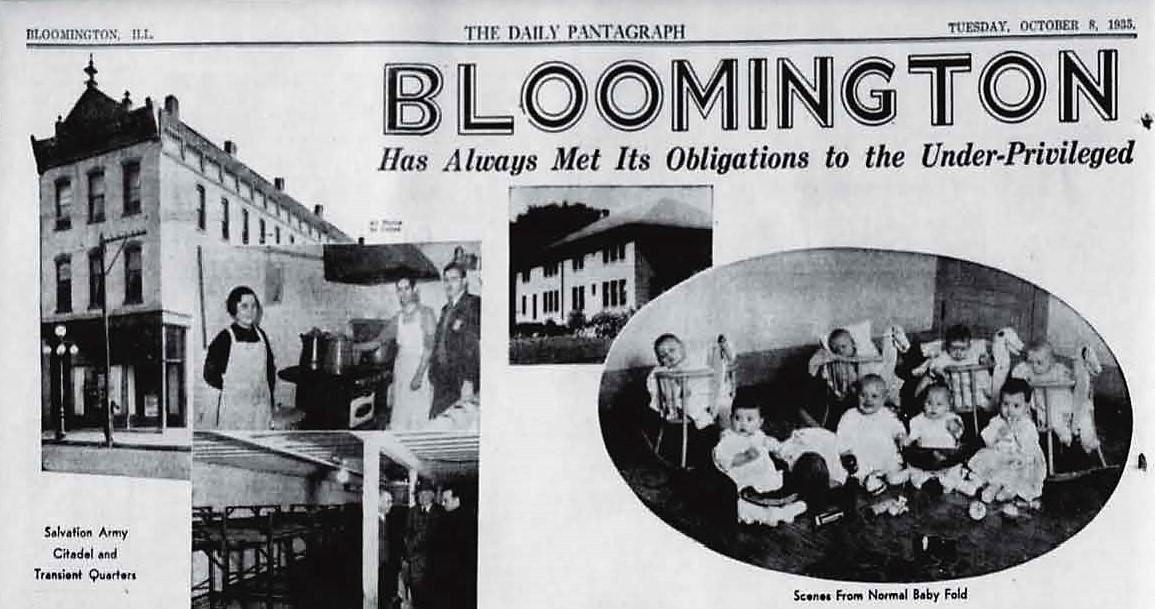
1940
The 1940s was an exciting decade for The Baby Fold! On November 14, 1941, the agency’s name officially changed from 'The Mason Deaconess Home for Aged' to 'The Baby Fold', as it had been lovingly referred to for years. A new statement of purpose was also formulated, '…To provide Christian care and training to dependent and homeless children from birth to six years of age.' The name change, a reference to Jesus Christ as the Good Shepard, as well as the new statement of purpose, reaffirmed the agency’s Christian heritage that we still value to this day.
New superintendents Rev. and Mrs. William A. Hammitt made significant improvements to The Baby Fold’s systematic processes. Before the Hammitts, children were cared for with no permanent records or files. The only information available about the children was notes jotted down on the back of envelopes found in a common box. Within short order, a detailed record system was developed. Additionally, a four-page admission form was implemented, including vital information such as place of birth, family relationships, health history, and more. These organized records helped document each child’s journey and gave adoptive parents meaningful insight into the child’s life before adoption.
The Hammitts also made transformational staffing and board changes at The Baby Fold. In 1942, The Baby Fold’s first graduate caseworker was hired. Emma Blackman was the first trained social worker in Bloomington-Normal, dedicating over 30 years to The Baby Fold. Throughout her service, Blackman found loving homes for over 600 children, earning the nickname ‘The Adoption Lady’. The Hammitts hired Judith Hogberg as Head Nurse on January 1, 1940, and “when she retired in 1971, she has invested 31 of the best years of her life in caring for Baby Fold children,” recalls Rev. Hammitt. Deaconess Grace Harris cared for over 1600 infants during her 35-year tenure at The Baby Fold. A devout woman of faith, she gathered special needs and handicapped staff together each Sunday for church. During this time, the Board of Directors more than doubled, leaping from seven to 15 members.
By the early 1940s, Illinois was one of just 12 states that had not modernized its archaic adoption process to better protect children. The Hammitts helped to revolutionize statewide adoption laws. During one session of the legislature, Rev. Hammitt recalls, “I made 27 trips to Springfield and spent parts of 27 days down there.” He fought tirelessly for the children of Illinois, serving as co-chair of the State Steering Committee for Adoption Reform and later as president of a statewide child welfare legislative committee. He spent years speaking, writing, and contacting legislators to ensure the safety of adopted children while Gwendolyn managed The Baby Fold. Finally, in 1949, Rev. Hammitt proudly stood alongside and witnessed Governor Adlai Stevenson sign the Child Welfare Law into action.
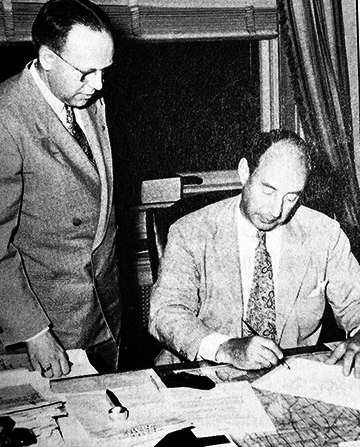
Rev. William Hammitt, Baby Fold Superintendent, witnesses Governor Adlai Stevenson sign the Child Welfare Law into action.
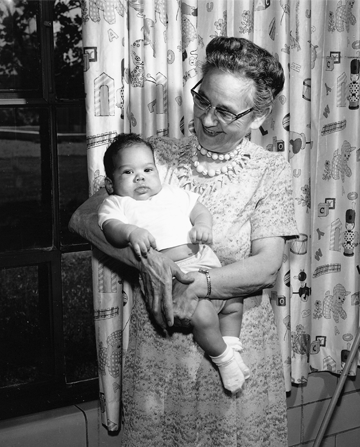
Emma Blackman was Bloomington-Normal's first social worker, finding adoptive homes for over 600 Baby Fold children.
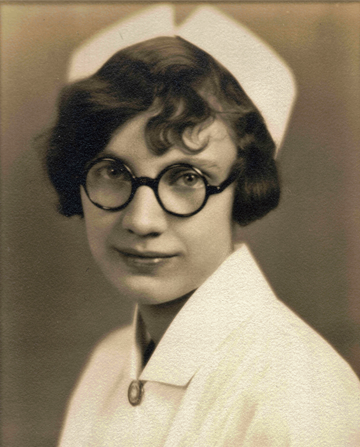
Head Nurse, Judith Hogberg, invested over 31 years caring for children at The Baby Fold
1950
On June 22, 1950, ground was broken for The Baby Fold's new nursery. Five buildings were ultimately planned, including an administrative building, a superintendent’s residence, and two cottages, in addition to the nursery. The Baby Fold had operated on a cash-only basis from the beginning and this venture would be no different. To secure the necessary funding, the agency planned to ask for the support of McLean County.
While the majority of children served by The Baby Fold were from McLean County, most support came from elsewhere. The agency had never made a countywide appeal for capital funds before. The Honorable Robert C. Underwood, a board member, spearheaded the McLean County campaign. As a county judge, Underwood overhauled the child welfare policies of McLean County including having a trained social worker in the juvenile probation office for the first time ever.
One very successful promotion for the McLean County campaign was the “Lights On” event on December 14, 1950. The Pantagraph urged readers to leave their porch light on or put a candle in their window from 7:00 – 10:00 pm if they were willing to receive a visit from one of The Baby Fold’s 150 volunteer solicitors. WJBC hosted special broadcasts to report on the progress, featuring Baby Fold Superintendent Rev. William Hammitt, Judge Underwood, local celebrities, and a barbershop quartet. The “Lights On” evening raised $14,000.
On October 17, 1952, The Baby Fold’s new nursery opened. The $260,000 construction included living quarters for the nurses and a clinic. Many special mementos were included during the build. A clay brick from the White House is mounted on a corridor wall with a bronze plaque that states, “original White House material, removed in 1950” with the Great Seal of the United States. Another commemorative plaque near the entrance honors "Mother" Tompie Asher and her years of service as Superintendent. Finally, an exterior cornerstone reads, "The Baby Fold, an Investment in Humanity." All of these items are still on display today; the space now known as Hammitt Elementary School.


1960
In the 1960s, The Baby Fold introduced new ministries to meet the emerging needs of the community. On May 15, 1961, The Baby Fold Board approved the care of infants with intellectual disabilities as well as a new cottage program. The residential cottage provided care for preschool-age children with emotional-behavioral disorders or severe mental health needs. Although the cost would be high for around-the-clock nursing, Superintendents Rev. William and Gwendolyn Hammitt recognized the importance of caring for these children. In the words of Rev. Hammitt, “No such service is available today… I hope we can lead the way in doing something about it.”
The Baby Fold’s social service staff also grew, including caseworkers who specialized in the care of children with disabilities. Caseworkers helped parents to better understand their child’s needs, kept the family up-to-date on the child’s developmental progress, and developed future plans with the family. Illinois State University’s Special Education department provided speech therapy and other special services to the children.
A testament to the success of the program includes the story of Little Jimmy, a five-year-old boy who suffered from multiple medical conditions and was unable to speak. Upon entering The Baby Fold, he was surrounded by specialized care tailored to meet his unique needs and help him grow. He received speech therapy twice a week and attended kindergarten in addition to Sunday School. Soon after, staff remarked that Little Jimmy had become “a new boy in spirit and outlook!”
The 1960s were a transformative time for The Baby Fold’s programs with the addition of special needs care.



1970
The Baby Fold has always sought to fill unmet needs in our community, and it was becoming apparent in the early 1970s that services for children with emotional-behavioral needs were in short supply. In 1970, the Joint Commission on the Mental Health of Children reported that 1.4 million children were in need of that type of special care and adequate facilities were only available for seven percent of them.
To help meet that need, The Baby Fold’s nursery was transformed into the new Child Development Center, opening on January 4, 1972, after the Christmas holiday. The new center’s goal was early diagnosis and treatment of behavior disorders in children, with each child’s parents actively involved. As is Baby Fold tradition, there were no restrictions based on race, color, or creed. All were welcome. No child was denied services because of a lack of financial resources.
A highly trained team of speech therapists, physical therapists, psychiatrists, psychologists, and more created custom treatment plans unique for each child’s needs. The number of children at the Child Development Center continued to grow and the center expanded in 1974 to accommodate more children.
That same year, Rev. and Mrs. William A. Hammitt retired after 35 years of service to The Baby Fold. A dinner was held in their honor, celebrating the couple's countless accolades. Rev. Hammitt was named “Man of the Year” in 1943 and “Outstanding Citizen of the Year” in 1971. The dinner’s program booklet stated that “the names ‘Hammitt’ and ‘The Baby Fold’ are almost synonymous, not only throughout Central Illinois, but across the length and breadth of this land.”
We can’t end our look at the 1970s without mentioning a cherished tradition that began in July 1979...The Baby Fold’s Summer Camp. Children from the Child Development Center visited Lake Bloomington daily for a week to enjoy therapeutic camp activities such as swimming, canoeing, crafts, and nature walks. The Summer Camp is still held each year and enjoyed by Hammitt Elementary School students and teachers.


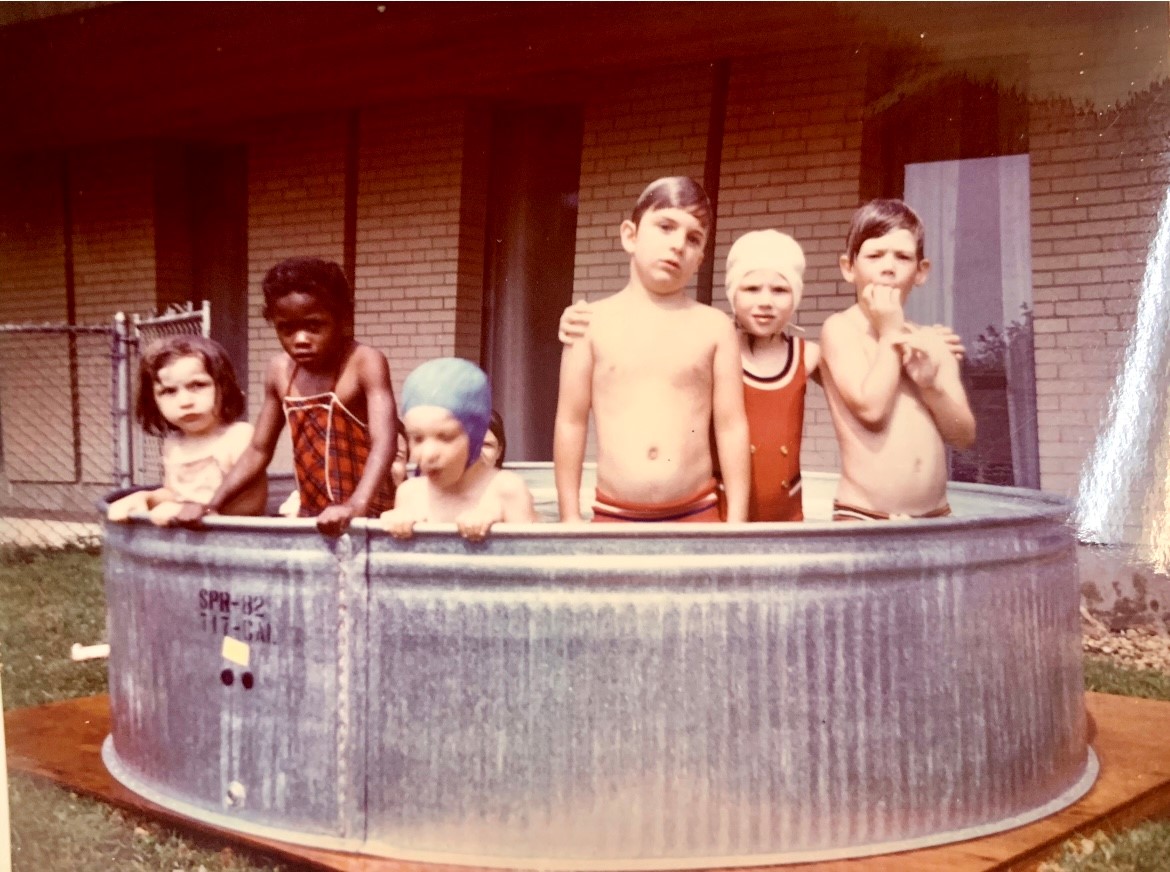
1980
In early 1981, the Board of Directors recognized the growing need for the care of children with emotional-behavioral concerns, and they met that challenge by approving an expansion of the Child Development Center. The official groundbreaking took place on March 12, 1982, and the Child Development Center was renamed Hammitt School in honor of Rev. William and Gwendolyn Hammitt’s 35-year legacy of service at The Baby Fold.
Classes began on the first floor of the new facility in early 1983, and by 1984, the second floor was ready as well. The new, two-story Hammitt School building held 10 classrooms with the capacity to serve 80 students. Through fundraising and good financial stewardship, the $1.5 million construction project was completed entirely debt-free. Students aged 3–11 received academic, social, and emotional support including physical, occupational, and speech therapies. Today, this is the home of Hammitt Elementary School, and two additional Junior-Senior High School campuses have been added to continue serving the emerging needs of our community.
Also in 1984, The Baby Fold’s Treatment Advisory Committee was formed. Experts in child development, medicine, law, and social work, as well as a parent of a child in our care, came together to oversee the agency’s treatment procedures and to protect the rights and welfare of the children. The important work of this committee continues to this day, with some of our community’s highest-accredited professionals serving on the team.
In the late 1980s, The Baby Fold’s services also expanded outside the walls of our buildings. Dr. Benjamin L. Moore, Clinical Director of The Baby Fold, tasked Family Services Coordinator Thomas Carroll with researching the effectiveness of providing services in a home environment. Carroll’s research showed that in-home services were highly successful, offering immediate help to parents in a natural family environment. Home-based services soon became an integral part of The Baby Fold’s work, and to this day, many of our programs meet the needs of children and families in the comfort of their own homes. Over 500,000 miles are logged on our agency’s fleet of vehicles each year so that kids and families receive the highest level of care, with over 15,000 client connections and visits annually.
“Throughout Illinois today…there is a new emphasis on helping families. Here at The Baby Fold, we’ve been doing that for years,” Carroll said in early 1990.
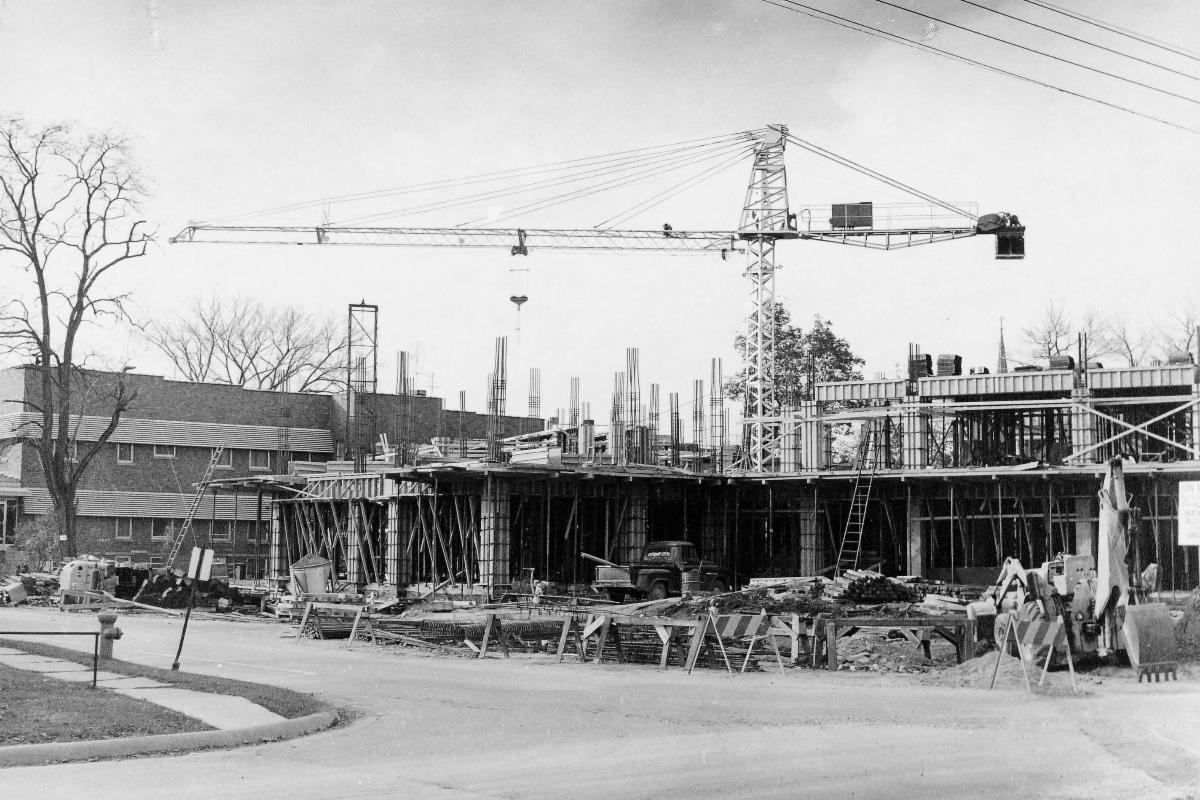
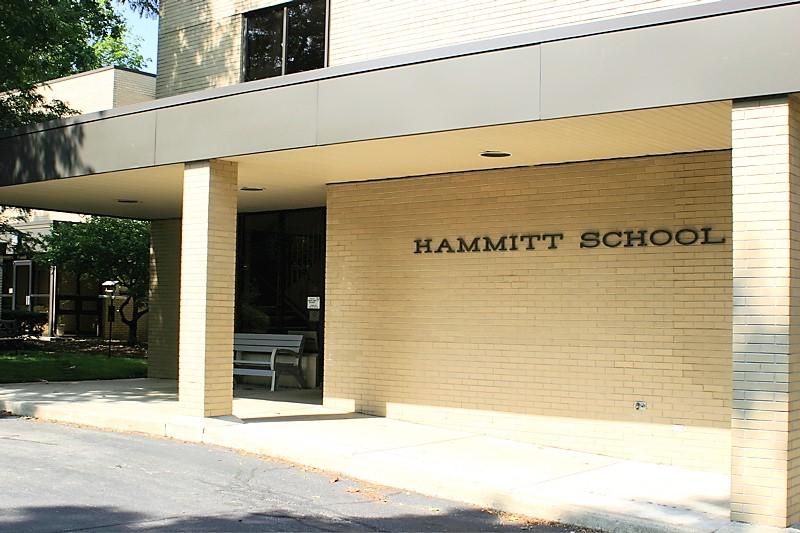
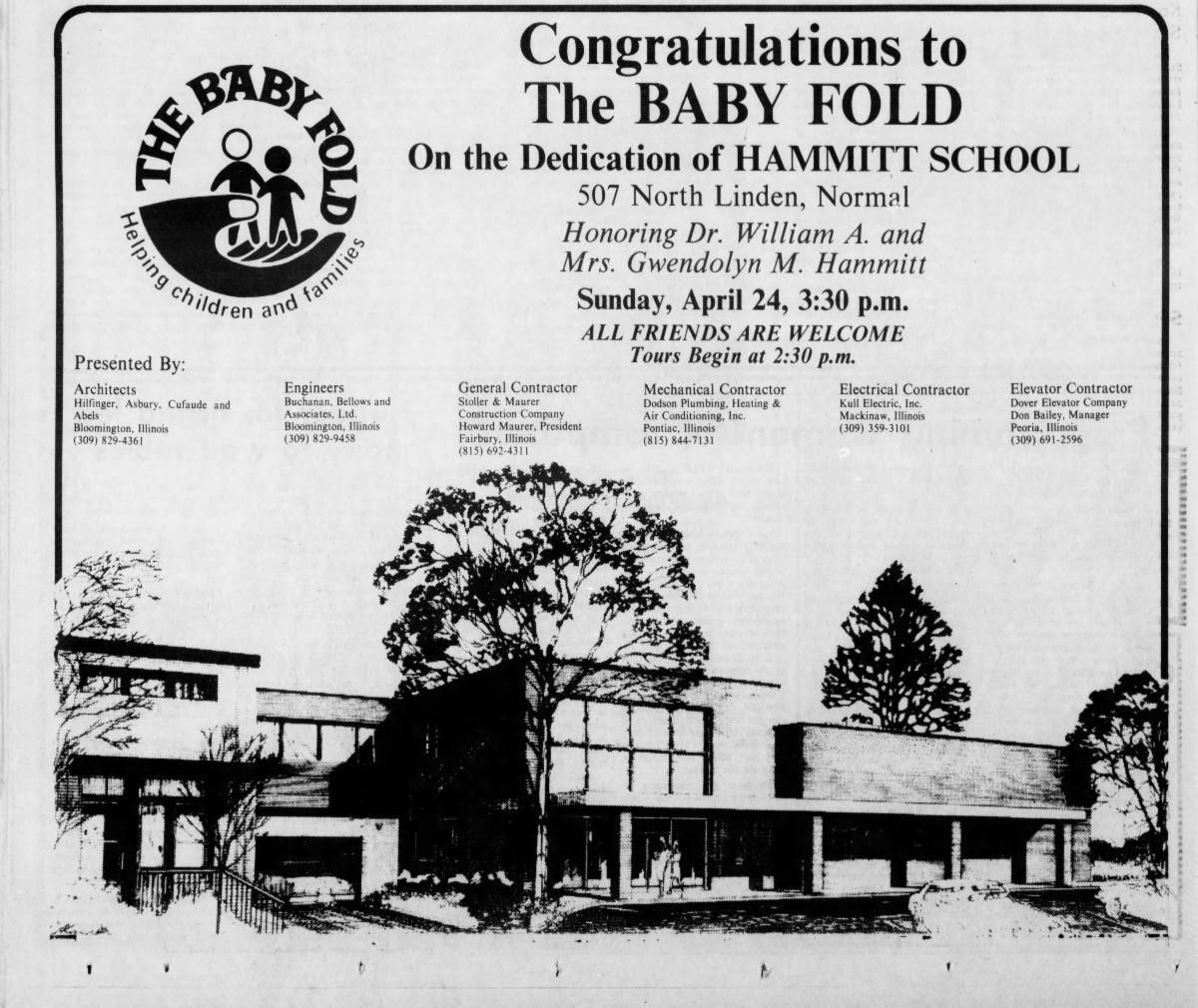
1990
The Baby Fold experienced a rapid expansion of services in the 1990s as the organization continued to evolve to meet the needs of local children and families.
The Challenges Program
The Baby Fold has long believed that each child is unique and that individualized programming is essential in meeting the needs of children. In August 1993, Hammitt School took that belief one step further and launched the Challenges program.
Challenges offers a customized classroom environment with individualized programming specifically designed for students with autism and/or communication disorders. Back in 1993, the revolutionary program consisted of a single classroom at Hammitt Elementary. The impact and student success was so strong, however, that Challenges has grown and it now consists of multiple classrooms at both the Elementary and Junior-Senior High Schools.
Adoption Support and Preservation
With roots based in adoption, The Baby Fold’s dedication to adoptive families grew even stronger in January 1994 when Adoption Preservation Services (now known as Adoption Support and Preservation) started offering therapeutic intervention to adoptive families. These important services are still offered to adoptive families today, strengthening their bonds and helping them through any rough waters they may experience.
Healthy Start
In January 1997 preventative services took the forefront when the Healthy Start program began offering education and supportive services to new parents. After all, when new parents are uplifted, supported, and secure, their child will be as well.
Healthy Start continues to this day and it is now offered in both McLean and Champaign counties.
The Festival of Trees
Finally, in late 1994 The Baby Fold launched one more thing…the Festival of Trees. While the event has become an important local tradition for families in Central Illinois, it is also The Baby Fold’s largest fundraiser, securing essential funding for the important programs and services we offer.
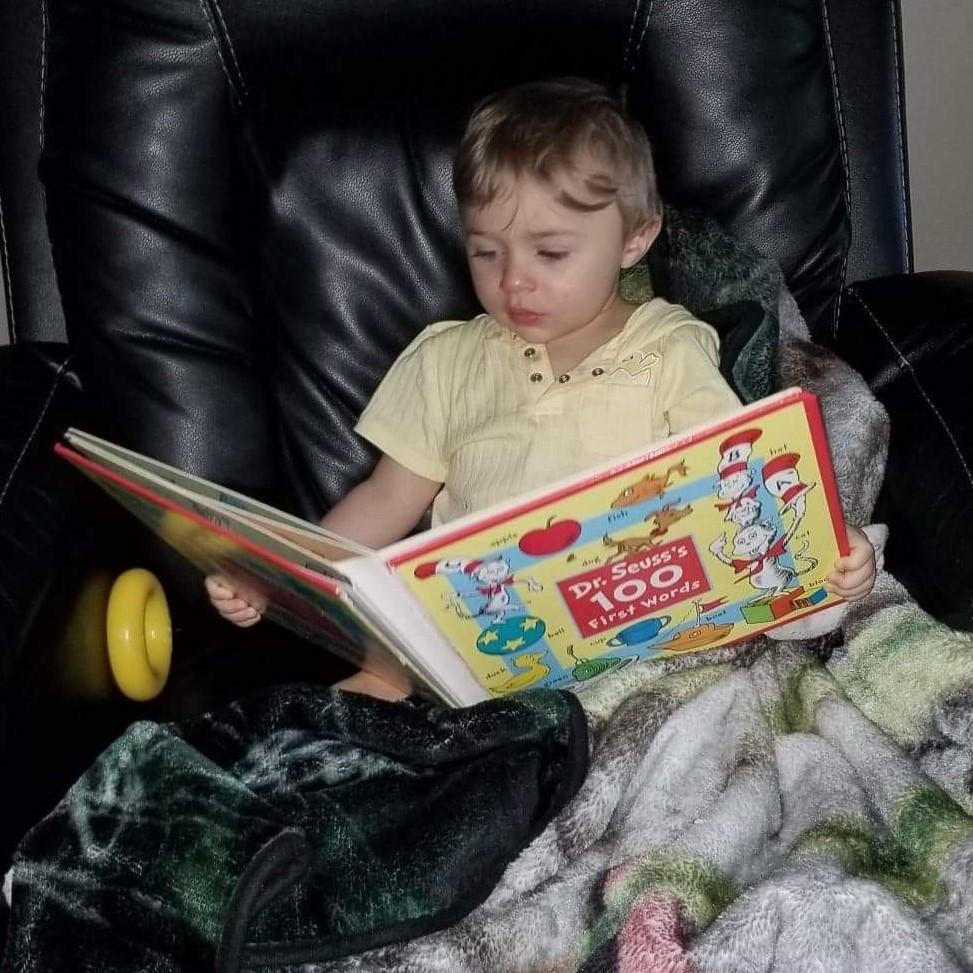

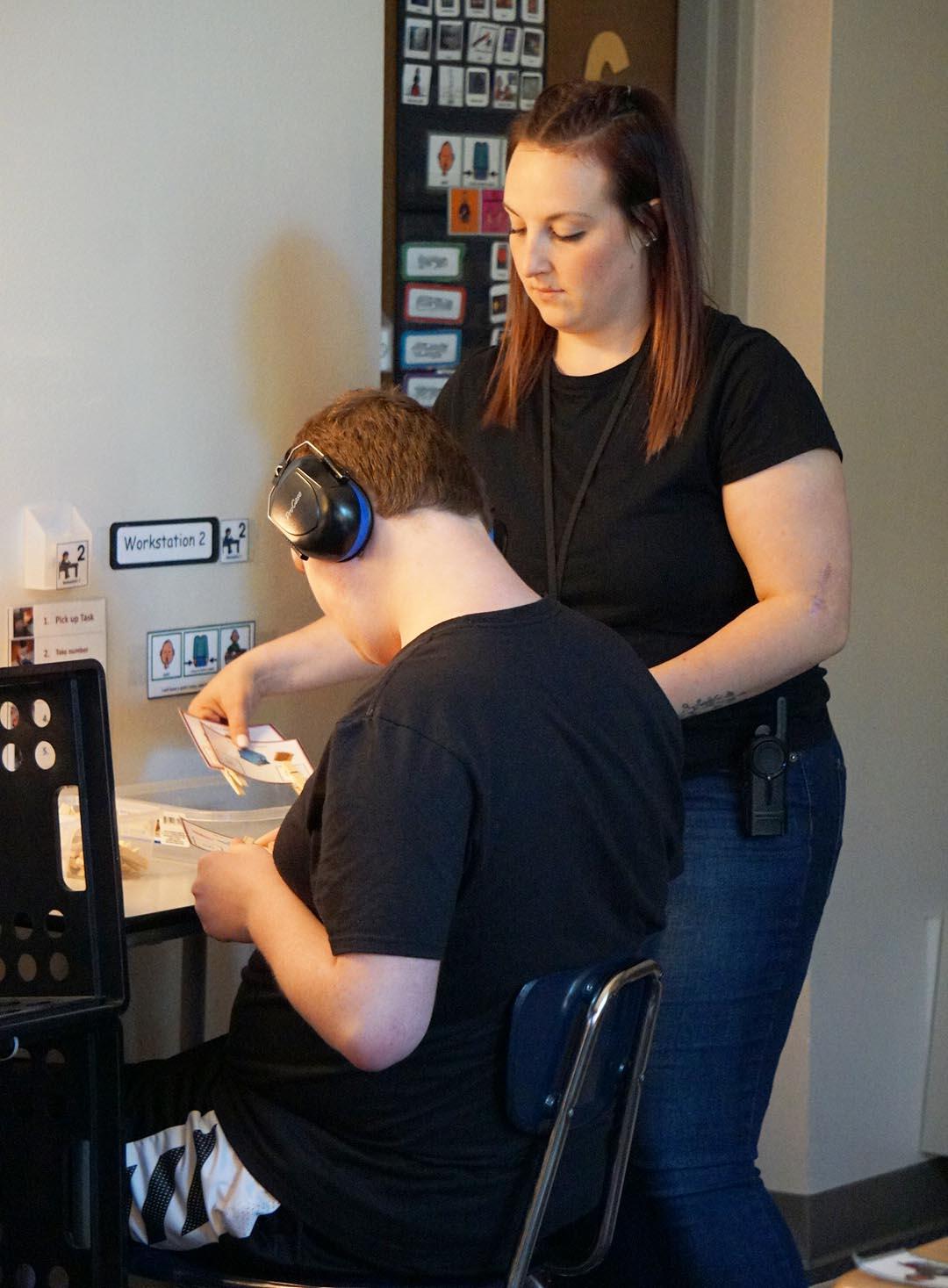
2000
After seeing the success with our individualized special education at Hammitt Elementary School, the program was expanded in 2002 and Hammitt High School opened. The school began with 16 students.
Hammitt High School later became Hammitt Junior-Senior High School and was expanded to include the junior high students and a Challenges Classroom for students with autism up to age 21.
We began the 2000s decade with major renovations and construction on our buildings on Oglesby in Normal. In May 2000, children officially moved into the new Residential Treatment Center at 614 Oglesby.


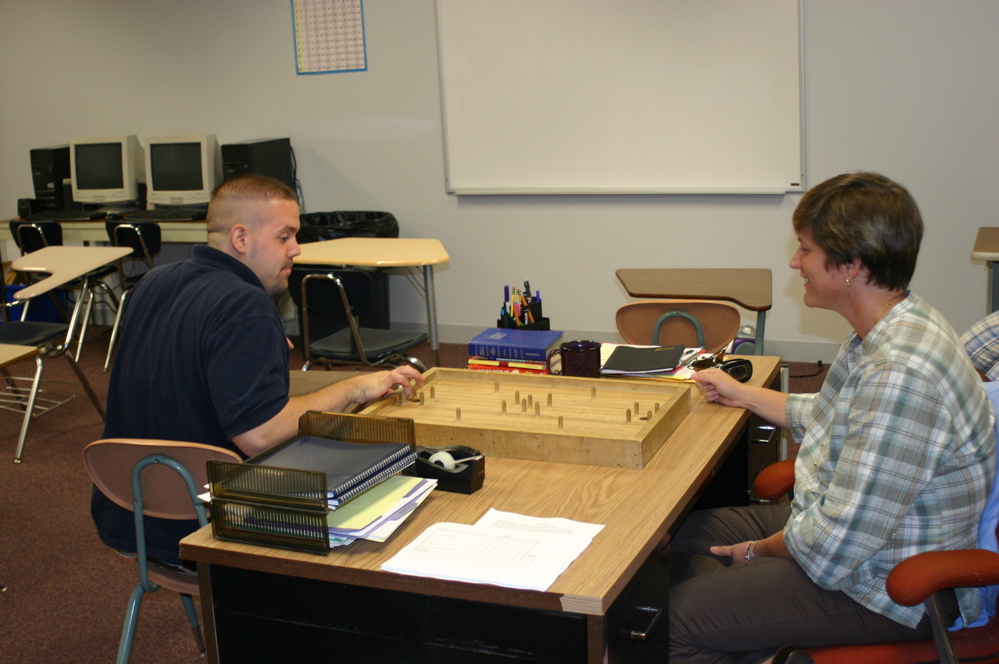
2010
The era around 2010 was another decade of expansion for The Baby Fold as the organization continued to grow in new ways to meet the needs of local children.
A brand new program called Community Schools launched in August 2015 at Fairview Elementary in Normal. After its success at Fairview, the program expanded in 2017 to include Cedar Ridge Elementary as well.
Through Community Schools, social workers are embedded in the schools and help identify and support trauma-impacted children and their families. The improvements in behavioral health and academic scores school-wide are significant. By bringing together all the stakeholders in student success, marshaling and coordinating access to resources and supports, and expanding learning time so students can master core concepts and skills, Community Schools ensures that barriers to learning are minimized and resources are maximized.
Another successful program at The Baby Fold saw significant expansion in 2017. The Healthy Start early intervention program opened an office in Urbana so that family support specialists could work with expectant families in Champaign County.
Healthy Start originally launched in McLean County in 1995. Through the program, The Baby Fold’s specialists form close relationships with expectant families and offer them a variety of parenting and community resources. Not only does the support specialist help the parent relate to their child, but they also help the mother and/or father build a safe and economically viable environment for their family.
During this time, the need for individualized special education services among young adults continued to grow. To help meet that need, however, more space was necessary. Thus, the former Illinois Soldiers' and Sailors' Children's School building at 612 Oglesby Avenue in Normal was renovated once again. After serving as the Family Center for years, the historical building once again became a school.
In August 2018, Hammitt Junior-Senior High School relocated there, allowing even more young adults to benefit from the individualized special education offered at the school.
Looking to the future, The Baby Fold will continue to grow and evolve as necessary to meet the needs of local children and families, just as we’ve done for the last 120 years.

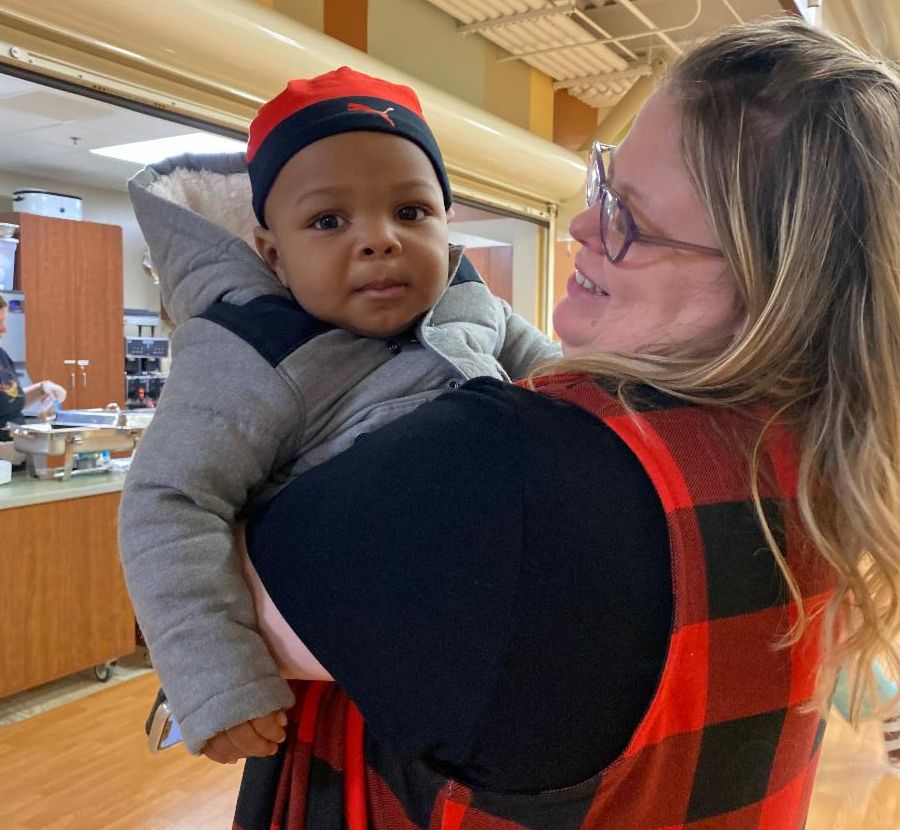
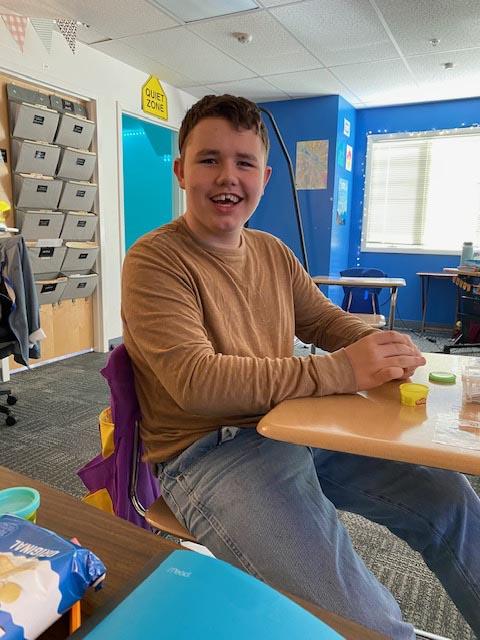
Take a Tour
To learn more about The Baby Fold’s history, join us for a tour of The Baby Fold!
